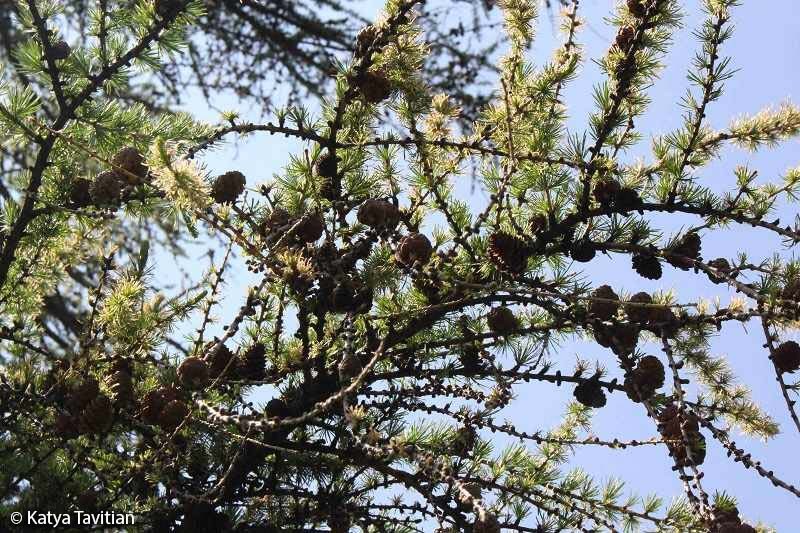Tamarack or eastern larch (Larix laricina; Mélèze laricin) is coniferous native, deciduous tree whose range spans from Canadian coast to coast and can be found in every province/territory, as well as in the very northeastern parts of the United States (Government of Canada, 2022). Its habitat typically consists of swaps and bogs and is often found in pure strands (patches of growth consisting of only tamaracks) (Uchytil, 1991).
From afar, the Tamarack can be identified by its slender, tall stature with sparse, ascending, or horizontal branches, covered in clustered bluish-green, soft needles that turn yellow and fall in Autumn. It, like the European larch, is part of one of the five genera of coniferous trees that are deciduous, and can be identified by their genus name (larix for larch in this case) (Lake Wilderness Arboretum, 2016). Its bark starts off grey and smooth and becomes reddish-brown and scaly with age (Government of Canada, 2022).
As a result of its deciduous nature, the tamarack is not often used as habitat for wildlife. However, it is browsed by some animals including the snowshoe hare and porcupine, but it is readily avoided by moose and white-tailed deer (Uchytil, 1991). Humans also have little use for it. It is not a valuable source for timber, but it can be used for pulpwood and its decay resistance makes it useful for posts and railway ties. Indigenous communities used the tamarack for arrowheads, medicine and cordage and early settlers would stuff pillows and mattresses with their needles (Uchytil, 1991).
Tamaracks are shade intolerant and non-dominant, which is why they thrive in their pure strands. They often occupy bogs before other species, but as the habitat becomes dense, they are outcompeted and replaced by other conifers, often the black spruce (Uchytil, 1991). This characteristic would not make them ideal for urban planting, as it is always better to have a diverse set of trees to ensure resilience, a condition in which a tamarack would not survive. Their tendency to grow in pure strands also makes them susceptible to epidemics, specifically caused by the larch sawfly. Ironically though, they are known to cast large shadows, under which many species, such as the bog birch and speckled alder, thrive to create a populated understory (Uchytil, 1991).

 Trunk of the Tamarack on the Loyola campus
Trunk of the Tamarack on the Loyola campus
 Needles (or leaves) and cones of the Tamarack on the Loyola campus
Needles (or leaves) and cones of the Tamarack on the Loyola campus